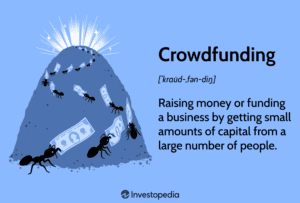So you have a great idea for a business, but you're not sure how to turn it into a successful venture. Well, have no fear! In this article, you will discover the essential steps to develop a successful business model. Whether you're a seasoned entrepreneur or just starting out, these simple yet effective strategies will guide you through the process of turning your idea into a thriving business. From understanding your target market to identifying revenue streams, this article will provide you with all the tools you need to create a solid foundation for your business and maximize its chances of success. So let's jump right in and discover how to develop a successful business model that will set you on the path to entrepreneurial success!
Identify a Need or Problem
Before starting any business, it is crucial to identify a need or problem in the market that your business can address. Conduct thorough research to understand the current market landscape and identify gaps or opportunities that exist. Look for problems that customers are facing but do not have a satisfactory solution for. By identifying a need or problem, you can ensure that there is a market for your product or service.
Research the Market
Once you have identified a need or problem, it is important to conduct extensive market research. This research will help you understand the size of the market, the demographics and preferences of your target customers, and the latest trends and developments in the industry. Use market research techniques such as surveys, interviews, and focus groups to gather insights and validate your assumptions.
Identify Target Customers
Understanding your target customers is crucial for the success of your business. Identify the specific characteristics, needs, and preferences of your target audience. This will help you tailor your product or service to meet their expectations and create effective marketing strategies. Consider factors such as age, gender, location, income level, and lifestyle when defining your target customer profile.
Analyze Competitors
Analyzing your competitors is essential for positioning your business in the market. Identify who your direct and indirect competitors are and assess their strengths, weaknesses, and market share. This analysis will help you understand the competitive landscape and identify opportunities to differentiate your business. Look for gaps in the market that your competitors have not yet addressed, or areas where you can provide a unique value proposition.
Define your Value Proposition
Once you have a clear understanding of the market and your competitors, it is time to define your value proposition. A value proposition is a statement that communicates the unique benefits or value that your product or service offers to customers. Determine what sets you apart from your competitors and how your product or service solves the identified problem or meets the needs of your target customers.
Determine Unique Selling Points
To differentiate your business from competitors, you need to determine your unique selling points (USPs). These are the specific features, aspects, or qualities of your product or service that make it stand out in the market. Consider factors such as quality, price, convenience, innovation, customer service, or any other aspect that sets you apart. Highlight these USPs in your marketing materials and communication to effectively attract customers.
Differentiate from Competitors
Differentiating your business from competitors is crucial for success. Explore ways to stand out from the crowd and create a unique brand identity. Emphasize your USPs in your marketing messages, packaging, branding, and customer experience. By demonstrating your unique value and offering something that competitors do not, you can attract and retain customers.
Choose a Business Structure
Selecting an appropriate business structure is an important decision that will impact your liability, taxes, and operations. Consider various legal structures such as sole proprietorship, partnership, limited liability company (LLC), or corporation. Evaluate the advantages and disadvantages of each structure, and choose the one that aligns with your business goals and provides the desired level of personal liability protection.
Consider Various Legal Structures
When choosing a business structure, it is important to consider factors such as ease of setup, ongoing compliance requirements, and the level of personal liability protection desired. Sole proprietorships and partnerships are relatively easy to set up but offer no personal liability protection, meaning you are personally responsible for any debts or liabilities of the business. LLCs and corporations provide limited liability protection but may have more complex compliance requirements.
Evaluate Tax Implications
Another important factor to consider when choosing a business structure is the tax implications. Different legal structures have different tax treatment. Sole proprietorships and partnerships are pass-through entities, meaning the profits and losses of the business are reported on the owner's personal tax return. Corporations, on the other hand, are subject to corporate tax rates. Consult with a tax professional to understand the tax implications of different business structures and choose the one that is most advantageous for your business.
Create a Revenue Model
Developing a revenue model is essential for determining how your business will generate income. Evaluate different pricing strategies and identify the most appropriate one for your product or service. Common pricing strategies include cost-based pricing, value-based pricing, competition-based pricing, and dynamic pricing. Additionally, identify the various revenue streams that your business can tap into, such as product sales, subscriptions, licensing, or advertising.
Evaluate Pricing Strategies
Determining the right pricing strategy is critical for the success of your business. Consider factors such as production costs, market demand, customer perception of value, and pricing of competitors. Cost-based pricing involves adding a markup to the production cost to determine the selling price. Value-based pricing focuses on the perceived value of the product or service to the customer. Competition-based pricing considers the prices charged by competitors. Dynamic pricing involves adjusting prices based on market conditions, demand, or other factors.
Identify Revenue Streams
In addition to determining pricing strategies, identify the different revenue streams that your business can leverage. This involves understanding the different ways your business can generate income beyond just product sales. For example, if you offer a software product, you can explore revenue streams such as offering premium features, providing consulting services, or integrating with other platforms through partnerships. Diversifying your revenue streams can help create a more sustainable and scalable business model.
Build and Test Minimum Viable Product (MVP)
Developing a minimum viable product (MVP) is a crucial step in the business development process. Prioritize the key features that are necessary for your product or service to function and provide value to customers. Create a prototype of the MVP and test it with a small group of users or target customers. Gather feedback, make necessary improvements, and test again until you have a product that meets the needs and expectations of your customers.
Prioritize Key Features
When building your MVP, it is essential to prioritize the key features that are critical to your product or service. Avoid the temptation to include every possible feature from the start, as this can lead to unnecessary complexity and delays. Instead, focus on the core features that provide the most value to customers and differentiate you from competitors. This will help you launch quickly and gather valuable user feedback.
Prototype and Test
Creating a prototype of your MVP is important to visualize how your product or service will look and function. Use wireframing or mockup tools to design the user interface and experience. Once the prototype is ready, test it with a small group of users or target customers to gather feedback. This feedback will help you identify any usability or functionality issues that need to be addressed before launching the final product.
Establish Key Partnerships
Identifying and forming strategic alliances with key partners can greatly benefit your business. These partnerships can help you reach a wider audience, access new markets, leverage complementary resources, or enhance your product or service offering. Identify potential partners that align with your business goals and values. Negotiate win-win partnerships that provide mutual benefits and create long-term synergies.
Identify Potential Strategic Allies
When looking for potential strategic allies, consider businesses or organizations that have a similar target audience or offer complementary products or services. For example, if you are launching a fitness app, you could form partnerships with gyms, nutritionists, or sportswear brands. These alliances can help you access their customer base and leverage their expertise or resources to enhance your offering.
Negotiate Win-Win Partnerships
When forming partnerships, it is important to negotiate agreements that provide mutual benefits. Clearly define the roles, responsibilities, and expectations of each partner. Consider factors such as revenue sharing, joint marketing efforts, cross-promotion, or resource sharing. Effective communication and collaboration between partners are crucial for success. Regularly review and evaluate the partnership to ensure it remains mutually beneficial.
Design an Effective Marketing Strategy
Developing an effective marketing strategy is essential for attracting and retaining customers. Identify the target marketing channels that reach your target audience effectively. This can include digital marketing channels such as social media, search engine optimization, content marketing, or email marketing. Develop a branding and positioning strategy that communicates your unique value proposition and resonates with your target customers.
Identify Target Marketing Channels
When designing your marketing strategy, it is important to identify the marketing channels that will effectively reach your target audience. Consider factors such as the demographics, preferences, and online behavior of your target customers. For example, if your target audience is millennials, social media platforms such as Instagram or TikTok may be more effective. If your audience is professionals, platforms like LinkedIn or industry-specific publications may be more suitable.
Develop Branding and Positioning
Branding and positioning are crucial for creating a unique identity for your business. Develop a brand strategy that reflects your values, personality, and unique value proposition. This includes designing a logo, choosing brand colors and fonts, and creating consistent brand messaging. Position your business in a way that differentiates you from competitors and resonates with your target customers. Communicate your unique value proposition clearly in all marketing materials and touchpoints.
Create an Operational Plan
To ensure the smooth operation of your business, it is important to create an operational plan. Define the key processes required to deliver your product or service efficiently and effectively. This can include processes for product development, inventory management, order fulfillment, customer service, or financial management. Allocate the necessary resources, such as human resources, technology, or physical infrastructure, to support these processes.
Define Key Processes
Identify the key processes that are important for the successful operation of your business. Document these processes in detail and ensure they are efficient, repeatable, and scalable. This can include processes such as product development, quality control, supply chain management, customer acquisition, or customer support. Regularly review and refine these processes to improve efficiency and adapt to changing business needs.
Allocate Resources
To execute your operational plan, allocate the necessary resources to support your key processes. This can include human resources, such as hiring the right talent or training your existing team, as well as technological resources, physical infrastructure, or financial resources. Assess your resource requirements and prioritize their allocation based on their impact on your business objectives and customer satisfaction.
Analyze and Monitor Financial Projections
Analyzing and monitoring your financial projections is crucial for the success and sustainability of your business. Create a financial forecast that includes projected revenue, expenses, and cash flow over a specific period. Track key performance indicators (KPIs) such as sales growth, customer acquisition cost, average transaction value, or profit margins. Regularly review your financial projections and KPIs to identify areas of improvement, make informed decisions, and ensure the financial health of your business.
Create a Financial Forecast
Develop a financial forecast that estimates your projected revenue, expenses, and cash flow over a specific period, typically one to three years. This forecast will help you understand the financial viability of your business model and make informed decisions. Consider factors such as sales forecasts, pricing, production costs, marketing expenses, and overhead costs. Regularly update your financial forecast based on new information or changing market conditions.
Track Key Performance Indicators
Key performance indicators (KPIs) are metrics that help you track the performance and progress of your business. Identify the critical KPIs that align with your business goals and monitor them regularly. This can include metrics such as revenue growth, customer acquisition cost, customer retention rate, gross profit margin, or return on investment. Use these KPIs to evaluate the effectiveness of your strategies, identify areas of improvement, and make data-driven decisions.
Conclusion
In conclusion, developing a successful business model requires careful planning and execution. By following the steps outlined above, you can increase your chances of creating a sustainable and profitable business. Identify a need or problem in the market, define your value proposition, choose an appropriate business structure, create a revenue model, build and test an MVP, establish key partnerships, design an effective marketing strategy, create an operational plan, analyze and monitor financial projections. Remember the importance of flexibility and continuous learning as you navigate the ever-changing business landscape. With dedication and perseverance, you can develop a business model that brings value to your customers and achieves your entrepreneurial goals.





